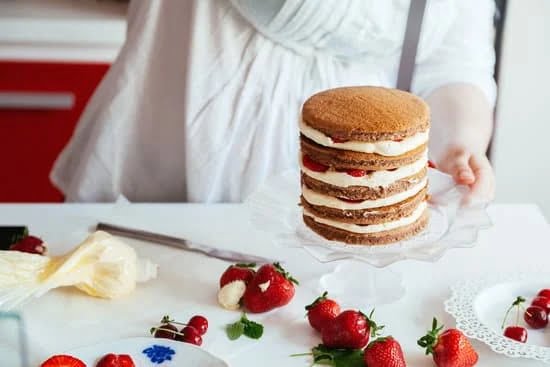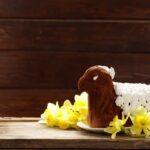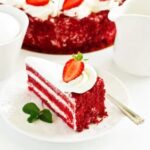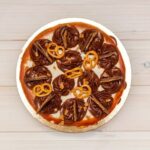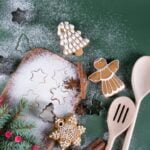In the world of baking and confectionery, cake decorating has evolved from simple frosting and piping techniques to intricate works of art. A new trend that has taken the cake decorating community by storm is the use of edible paint. These vibrant and versatile paints allow bakers to transform plain cakes into stunning masterpieces, bringing their creative visions to life.
With the increasing popularity of cake decorating, it comes as no surprise that more and more people are experimenting with different techniques and tools. Edible paints have become an essential part of this artistic journey, providing decorators with a whole new range of possibilities. Not only do these paints add eye-catching colors and details, but they also allow for precise control and blending effects that were previously unachievable.
This article will delve into the captivating world of cake decorating paint recipes, exploring everything from understanding the basics to providing a step-by-step guide for creating your own homemade paint. We will uncover the necessary ingredients, tips for successful application, safety considerations, and even showcase inspiring designs to spark your creativity.
By the end of this article, you’ll be equipped with all you need to unleash your inner artist on cakes using edible paint. So let’s dive into this enchanting realm where delicious flavors meet stunning artistry.
Understanding the Basics
Cake decorating paint refers to the edible paints specifically formulated for use in cake decoration. While traditional cake decoration techniques involve piping, fondant, or icing, using edible paint offers a different way to enhance the appearance and bring artistic flair to cakes. Unlike regular paint, cake decorating paint is made from food-grade materials that are safe for consumption.
The primary purpose of cake decorating paint is to add color, detail, and depth to cakes. It allows decorators to create intricate designs and achieve a professional finish without relying solely on piping or sculpting techniques. With cake decorating paint, decorators can achieve various effects such as shading, highlighting, and blending colors seamlessly.
Using edible paints for cake decoration offers several advantages. Firstly, it provides greater flexibility when it comes to design options. Paints can be used to create intricate patterns or replicate realistic imagery. Secondly, edible paints allow decorators more precision and control over their designs compared to traditional decoration methods. Additionally, they open up possibilities for achieving vibrant and unique color combinations that may be challenging using other mediums.
To create high-quality cake decorating paint, it is essential to understand the key ingredients involved. The main components typically include food coloring (also available in liquid or gel form), alcohol-based extracts (such as lemon extract), clear vanilla extract, and food-grade alcohol (e.g., vodka). Each ingredient plays a crucial role in determining the consistency and texture of the paint.
Here’s a breakdown of the ingredients:
- Food Coloring: This adds color to the paint and can be mixed together to achieve different hues.
- Alcohol-Based Extracts: They help thin out the food coloring and provide better coverage when applied.
- Clear Vanilla Extract: This enhances the flavor of the cake while allowing the colors of the paint to shine through.
- Food-Grade Alcohol: It acts as a solvent for dissolving gel-based food coloring and helps the paint dry quickly.
By understanding the basics of cake decorating paint, decorators can confidently explore new ways to elevate their creations and bring their artistic visions to life. In the following section, we will provide a step-by-step guide for making cake decorating paint at home, allowing decorators to have full control over color choices and consistency.
Essential Ingredients for Making Cake Decorating Paint
Cake decorating paint is a versatile and popular tool for adding vibrant colors and intricate designs to cakes. To create this edible paint, it is important to gather the essential ingredients that will ensure safe and effective results. Using food-grade materials is crucial to avoid any health concerns or adverse reactions. Here are the key ingredients needed for making cake decorating paint:
Gel Food Coloring
Gel food coloring is the primary ingredient in cake decorating paint as it provides intense, concentrated color pigments that can easily be mixed and diluted to achieve desired shades. Unlike liquid food coloring, gel coloring does not alter the consistency of the paint or cause excessive moisture on the cake surface.
Clear Alcohol
Clear alcohol, such as vodka or clear extract like clear vanilla extract, serves two purposes in cake decorating paint. Firstly, it helps dissolve the gel food coloring effectively, allowing easier blending and mixing of colors. Secondly, alcohol evaporates quickly when applied to the cake surface, ensuring a smooth and fast-drying finish.
Edible Dusts or Powdered Colors
Edible dusts or powdered colors are optional but can add depth and shine to your cake decoration paint. These dusts come in various metallic shades like gold, silver, bronze etc., which can be used alone or mixed with gel food colors to create beautiful metallic effects on cakes.
Mixing Palette and Brushes
While not exactly ingredients, having a clean mixing palette made of glass or plastic along with clean brushes is essential for preparing and applying cake decorating paint. The mixing palette allows you to blend different colors together smoothly while brushes help apply the paints onto your cakes precisely.
When using these ingredients for making your own cake decorating paint recipe at home, it’s important to ensure they are fresh and within their expiration dates. Also remember to keep them separate from non-edible paints or materials to eliminate any risk of contamination. With these essential ingredients in hand, you can create a wide range of colors and effects to bring your cake designs to life.
DIY Recipe
Gathering the Ingredients
Before diving into the recipe, it’s essential to have all the necessary ingredients at hand. Thankfully, creating homemade cake decorating paint doesn’t require a long list of hard-to-find materials. The main ingredients you’ll need are gel food coloring and a liquid component such as vodka or clear vanilla extract. Gel food coloring is preferable as it provides vibrant and concentrated shades without altering the consistency of the paint.
Gel Food Coloring
When selecting gel food coloring, opt for high-quality brands that produce intense colors. These can usually be found in specialty baking stores or online. It’s recommended to start with primary colors: red, blue, and yellow. By mixing these primary colors together, you can create an extensive range of secondary colors.
Liquid Component
The liquid component in cake decorating paint serves two purposes: diluting the gel food coloring and evaporating quickly to allow for smooth application and drying. Vodka is commonly used because it has a high alcohol content that helps evaporate rapidly without leaving any residue or flavor behind. Clear vanilla extract is another suitable choice if you prefer not to use alcohol but keep in mind that it may extend drying time slightly.
Mixing the Paint
Once you have gathered your ingredients, it’s time to mix them together and create your own custom cake decorating paint. Begin by preparing small glass jars or containers with lids to hold your paint. These containers should be clean and dry before use.
Step 1: Quantity Measurements
To ensure consistent results every time you make cake decorating paint, it’s crucial to measure ingredients accurately. Start by pouring one teaspoon of vodka or clear vanilla extract into each container. This will serve as the base liquid for your paint mixture.
Step 2: Adding Color
Using a toothpick or a clean skewer, dab a small amount of gel food coloring onto the base liquid in the container. Start with a tiny amount, as gel colors are highly concentrated. Remember that you can always add more color later if needed. Repeat the process with different colors to create various shades.
Step 3: Mixing Thoroughly
Once the color is added, using a clean toothpick or small paintbrush, mix the base liquid and the gel food coloring together until they are completely combined. Make sure there are no streaks or lumps; you want a smooth and evenly colored paint.
With your homemade cake decorating paint ready, it’s time to unleash your creativity and transform plain cakes into edible works of art. Experiment with different shades and techniques to achieve stunning results that will impress both friends and family. Remember to cover any unused paint containers tightly to prevent them from drying out, and have fun exploring the limitless possibilities of cake decorating paint.
Exploring Different Techniques
Cake decorating paint opens up a whole new world of artistic possibilities when it comes to decorating cakes. It allows decorators to create intricate designs, vibrant colors, and stunning effects that are simply not achievable with traditional cake decoration techniques. In this section, we will explore various application techniques using cake decorating paint and provide step-by-step guidance on achieving professional-looking results.
One of the most important aspects of working with cake decorating paint is mastering the art of brush strokes. Brush strokes can completely transform the look and texture of your design, creating depth, dimension, and movement. Different brushes will yield different results, so it’s important to experiment and find what works best for your desired effect.
Blending colors is another technique that adds a beautiful touch to cake decorations. By blending two or more colors together, you can create smooth transitions or gradients that give your design a professional and polished look. This technique is particularly effective for creating realistic floral patterns or creating a sense of depth in landscapes.
Layering is yet another technique that can take your cake decorations to the next level. By layering different colors or patterns on top of each other, you can create intricate designs with depth and complexity. This technique works well for creating textured backgrounds or adding fine details to specific elements of your design.
To help you visualize these techniques, let’s look at an example: creating a watercolor-inspired floral design on a cake. Start by applying a base color to the areas where you want your flowers to be. Then, using a thin brush, add strokes of different colors onto the base color to represent petals and leaves. Use gentle blending techniques to soften the edges and create a watercolor effect. Finally, layer additional colors on top for added detail and depth.
These are just a few examples of the many techniques you can use when applying cake decorating paint. The key is practice and experimentation – don’t be afraid to try new things and let your creativity shine. With time and experience, you will develop your own unique style and become a true cake decorating artist.
| Technique | Description |
|---|---|
| Brush Strokes | Mastery of brush strokes can create depth, dimension, and movement in designs. |
| Blending Colors | Blending different colors together can create smooth transitions and gradients for a professional look. |
| Layering | Layering different colors or patterns adds depth and complexity to designs. |
Tips and Tricks for Successful Cake Decorating Painting
Mastering Paint Consistency and Drying Time
One of the key elements to successful cake decorating painting is achieving the right consistency of your paint. The consistency will depend on the technique you are using and the desired effect you want to achieve. For fine details and intricate designs, a thicker consistency is preferred, while a more liquid consistency works well for covering larger areas.
To achieve the perfect consistency, start with a small amount of edible paint and gradually add more if needed. If your paint becomes too thin, you can thicken it by adding small amounts of powdered sugar or cornstarch. On the other hand, thinning it out can be done by adding a few drops of water or food-grade alcohol.
Another important consideration when working with edible paints is drying time. Allow each layer of paint to dry completely before applying another layer or moving on to a different color. This will prevent smudging or blending of colors unintentionally. Depending on the humidity and temperature in your workspace, drying times may vary, so be sure to give each layer enough time to dry before proceeding.
Preparing Your Cake Surface for Painting
Before diving into cake decorating painting, it’s crucial to prepare your cake surface properly. A smooth and clean surface will ensure that the paint adheres evenly and produces a professional-looking result.
Start by crumb coating your cake with a thin layer of icing or buttercream frosting to create an even base. This step helps seal in crumbs and provides a smooth canvas for painting.
Once the crumb coat has set, you can use fondant or ganache as an additional base layer for painting. These materials provide an extra smooth texture, making it easier for the paint to glide across the surface without any imperfections.
If you’re working with buttercream frosting as your final coating, make sure it is fully chilled and firm before applying edible paint. This will prevent the paint from melting or smearing on the surface.
Troubleshooting Challenges in Cake Decorating Painting
As with any creative endeavor, challenges may arise when working with cake decorating paint. However, understanding common issues and having solutions readily available can help you overcome these obstacles with ease.
One common challenge is streaks or uneven coverage. This can occur if the paint consistency is too thin or if you’re using too much pressure when applying the paint. To avoid streaks, ensure your paint is well mixed and has a consistent thickness before applying it to your cake. Use gentle brush strokes and apply multiple thin layers for even coverage.
Another challenge to watch out for is color bleeding or running. This can happen when you apply wet paint on a wet surface or when you use excessive liquid in your paint mixture. Prevent color bleeding by allowing each layer to dry completely before adding another, and make sure to use only small amounts of liquid at a time when mixing your paints.
By keeping these tips and tricks in mind, you’ll be well-equipped to tackle any challenges that come your way while cake decorating painting. Remember to practice patience and have fun exploring the limitless possibilities that edible paints offer in creating beautiful and delicious works of art.
Ensuring Safety and Considerations
When it comes to cake decorating, safety is of utmost importance, especially when using edible materials. With the rise in popularity of edible paints for cake decoration, it is crucial to understand the safety considerations involved. In this section, we will address concerns regarding the safety of cake decorating paints and provide valuable information to ensure a safe and enjoyable experience.
One of the primary concerns when using cake decorating paint is the use of food-grade materials. It is essential to choose paints that are specifically labeled as edible and safe for consumption. These types of paints are made with ingredients that are approved by regulatory authorities, ensuring they meet strict health standards.
Allergen considerations also play a vital role in cake decorating with edible paints. Many individuals have allergies or sensitivities to certain food ingredients, so it is crucial to be mindful of these potential allergens when choosing your paint materials. Look for paints that are free from common allergens such as nuts, gluten, or dairy if you anticipate serving the decorated cake to guests with dietary restrictions.
For those with specific dietary needs or preferences, alternative options are available for creating edible paints. Some recipes use natural food coloring agents like beetroot juice or matcha powder instead of artificial dyes. These alternatives can offer a healthier option while still allowing you to achieve vibrant colors for your cake decorations.
By following these safety considerations and making informed choices about the materials used in cake decorating paint recipes, you can ensure both the visual appeal and overall safety of your finished creations. Creating beautiful and delicious cakes should always go hand in hand with prioritizing the well-being of those who will enjoy them.
Inspiring Ideas
Cake decorating paint opens up a world of creativity and endless design possibilities for cake decorators. With the right paint recipe, decorators can transform ordinary cakes into stunning works of art. In this section, we will explore some inspiring ideas and creative cake decorating paint designs that will surely ignite your imagination.
Showcasing Inspirational Images and Designs
To get started on your cake decorating journey, it can be helpful to gather inspiration from various sources. By looking at images and designs created by skilled decorators, you can learn new techniques and get ideas for your own creations. Websites, social media platforms, and cake decorating forums are all great places to find inspirational images.
When searching for inspiration, it’s important to consider the theme or occasion you are designing for. Whether it’s a birthday party, wedding celebration, or festive holiday gathering, there are countless ways to incorporate cake decorating paint into your design. From delicate floral patterns to vibrant geometric shapes, the options are truly endless.
Exploring Different Themes, Occasions, and Styles
Cake decorating paint can be used to enhance any theme or occasion. For a whimsical children’s birthday party, you could create a colorful unicorn cake using pastel shades of pink, purple, and blue. On the other hand, for a sophisticated wedding cake design, you might opt for elegant metallic accents in gold or silver.
Don’t be afraid to experiment with different styles as well. If you’re a fan of watercolor paintings or abstract art, try incorporating those techniques into your cake decoration using edible paints. Play with different brush strokes and blending techniques to achieve unique textures and effects on your cakes.
Encouraging Creativity and Experimentation
Above all else, creative freedom is key when it comes to using cake decorating paint. While there are many traditional designs that decorators often use as a starting point (such as florals or patterns), the beauty of cake decorating is that you can truly create anything your heart desires. Allow yourself to think outside the box and let your imagination guide you.
Remember, practice makes perfect, so don’t be discouraged if your first attempts don’t turn out exactly as planned. With each design you create, you’ll gain more experience and refine your skills. And who knows? Your unique cake designs created with cake decorating paint might even inspire others.
Conclusion
In conclusion, cake decorating paint opens up a whole new world of creative possibilities for aspiring cake artists. By using edible paints, decorators can achieve vibrant and intricate designs that simply weren’t possible with traditional cake decorating techniques. Throughout this article, we have explored the basics of cake decorating paint, learned how to make it from scratch, discovered various application techniques, and even addressed safety concerns.
One of the major advantages of using edible paints for cake decoration is the ability to create custom colors and effects. With just a few basic ingredients and a little bit of creativity, anyone can mix their own unique shades to match any theme or occasion. Whether you’re aiming for a watercolor look or a bold and vibrant design, the possibilities are truly endless.
It’s important to remember that while cake decorating paint offers boundless artistic opportunities, safety should always be a priority. By using food-grade materials and considering potential allergens, decorators can ensure that their creations are not only visually stunning but also safe for consumption. Additionally, alternative options exist for individuals with dietary restrictions, so no one has to miss out on the joy of edible art.
So why not unleash your inner artist with cake decorating paint? Grab your brushes, mix up some colors, and let your imagination run wild. Whether you’re an experienced decorator or just starting out, this recipe provides an easy-to-follow guide that will have you creating stunning designs in no time. Remember to share your masterpieces on social media and join the growing community of cake artists who are taking this delicious medium to new heights.
Frequently Asked Questions
How do you make cake decorating paint?
Cake decorating paint can be made by combining food coloring with a liquid or gel medium that is safe to consume. One common method is to mix food coloring with clear alcohol, such as vodka or lemon extract, to create a paint-like consistency.
The alcohol evaporates quickly, leaving behind the colored pigment on the cake. Another option is to mix food coloring with a small amount of light corn syrup or glycerin, which helps the color adhere to the surface of the cake.
Can you make your own cake paint?
Yes, it is possible to make your own cake paint using edible ingredients. As mentioned earlier, mixing food coloring with a suitable medium like alcohol or corn syrup can create homemade cake paint.
The advantage of making your own paint is that you have control over the colors and can adjust them according to your preferences. It also allows for customization and experimentation in creating unique shades and textures for your cake decorations.
What paint is used for cake decorating?
Food-grade edible paints are typically used for cake decorating purposes. These paints are specifically formulated and approved for consumption, ensuring that they do not pose any health risks when applied to cakes or other edible creations.
These edible paints are often made from food dyes or pigments mixed with safe mediums that help bind and adhere the color to the cake’s surface without compromising its taste or texture. Common options include liquid food coloring, gel colors, airbrush paints, and even dusts mixed with liquid mediums to create watercolor-like effects on cakes.

Welcome to our cake decorating blog! My name is Destiny Flores, and I am the proud owner of a cake decorating business named Cake Karma. Our mission is to provide delicious, beautiful cakes for all occasions. We specialize in creating custom cakes that are tailored specifically to each customer’s individual needs and tastes.

